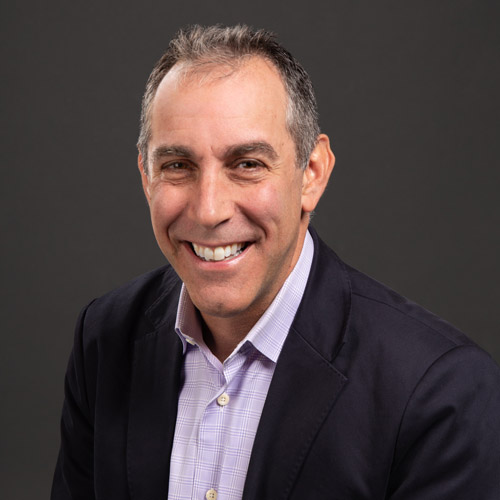Red Sox Player Jarren Duran’s Suicide Attempt Admission Praised by BU Trauma Expert for Helping with Stigma
Epidemiologist, and director of BU’s Center for Trauma and Mental Health, Jaimie Gradus says “predicting suicide is a challenge”

Jarren Duran’s admission that he attempted to commit suicide during a bad slump shocked the Red Sox organization and prompted praise for his candidness on an often taboo subject. Photo via AP/Joe Robbins/Icon Sportswire
Red Sox Player Jarren Duran’s Suicide Attempt Admission Praised by BU Trauma Expert for Helping with Stigma
Epidemiologist, and director of BU’s Center for Trauma and Mental Health, Jaimie Gradus says “predicting suicide is a challenge”
When Boston Red Sox star outfielder Jarren Duran—a physically ripped, handsome, millionaire ballplayer for a world-favorite franchise—admitted in a Netflix docuseries that he tried to commit suicide during a bad slump, it sent shock waves through the sporting world and beyond. Him? Suicide?
But Jaimie Gradus says “predicting suicide is a challenge,” for so many reasons. An associate chair and professor of epidemiology at Boston University’s School of Public Health, and the director of the Center for Trauma and Mental Health, Gradus says in an interview with The Brink that “suicide is actually a relatively rare event, but the strong risk factors for suicide, like depression, are not rare.”

Duran’s revelation came in The Clubhouse: A Year with the Red Sox, an eight-part series that gives Sox fans an inside look of their team during the 2024 season. In the fourth episode, titled “Still Alive,” Duran shares a chilling struggle with his mental health during a particularly bad stretch of play.
“I was already hearing it from fans,” Duran says in the episode. “And what they said to me, [it was like], ‘I’ve told myself 10 times worse in the mirror.’ That was a really tough time for me. I didn’t even want to be here anymore.”
When the director Greg Whiteley asks what he means, Duran says: “I got to a point where I was sitting in my room, I had my rifle and I had a bullet, and I pulled the trigger and the gun clicked, but nothing happened. So, to this day, I think God just didn’t let me take my own life because I seriously don’t know why it didn’t go off. I took it as a sign of, ‘I might have to be here for a reason.’” Then he added, “That happened for a reason and, obviously, you’re here for a reason, so let’s be the way you want to be and play [the way] you want to play and live the way you want to live.”
After it was made public, Red Sox President and CEO Sam Kennedy praised Duran for sharing so openly. “Jarren’s decision to share his story is an act of courage that reaches far beyond baseball,” Kennedy said.
The Brink spoke with Gradus, who is a scientific advisor to the American Foundation for Suicide Prevention, about the importance of Duran’s frank discussion about his struggles and suicidal thoughts.
Q&A
with Jaimie Gradus
The Brink: Some people might look at Jarren Duran, and just be baffled that he could consider suicide. But your research has focused on why predicting suicide is so hard. Can you talk about why it’s so hard to predict suicidal actions?
Gradus: There are a few reasons. One scientific reason is that on the population level, suicide is actually a relatively rare event, but the strong risk factors for suicide, like depression, are not rare. In general, predicting a rare event among many people who could have the event is difficult; you need a lot of detailed information about what might distinguish between a large number of people who do and do not consider suicidal behavior in order to identify the people most at risk. Given that people have different life experiences and paths to suicidal behavior, accumulating all of the knowledge about what might differentiate people in terms of risk is a challenge and a large research undertaking that is underway, but it is complex and will take time.
In addition, we know a lot of people who make a suicide attempt or die by suicide experience some precipitating extreme life stressor, like the loss of a job or a relationship. We often think of it as the responsibility of the healthcare system to monitor people at risk of suicide and intervene where necessary, but stressors do not typically warrant healthcare system contact, and the healthcare system cannot monitor people at risk at all times. So, predicting suicide is a challenge, because it also involves access to real-time information that cannot be easily obtained through the most common avenues for interactions with people at risk.
The Brink: What is it about suicide, or thoughts about suicide, that make it so difficult for people to talk about? Is it embarrassment, or a fear of looking weak?
I think it can be both of those things, and just general stigma and fear of being judged. As someone who has been doing suicide research for about 20 years, I have seen more recent generations become more and more open in talking about mental health struggles and suicide, and this is such an important improvement to addressing stigma.
The Brink: When you hear Duran’s words and see a very public athlete speak so candidly, what do you hope people take away from that?
Suicide attempts typically include some amount of impulsivity—that is someone is experiencing a crisis, decides to engage in suicidal behavior, and does it almost immediately. It is not uncommon to hear people who survive suicide attempts say that as soon as they realized that they survived the attempt, they were relieved about it. An activist named Kevin Hines has talked very publicly about these feelings after surviving a jump from the Golden Gate Bridge and that is a very interesting story for people interested in more information about this topic. So, my hope, and I think the hope of everyone who works in suicide prevention, is for people to realize that if they take some time to stop and reach out for support when they are considering a suicide attempt, they will likely begin to feel differently and feel glad that they did not act on those feelings.
The Brink: The Red Sox general manager praised Duran for sharing like he did. He said, “By opening up, he’s showing others who may be struggling that they’re not alone and that asking for help isn’t just OK, it’s essential.” Do you think that’s a fair statement?
I do. One of the best strategies we have for preventing suicide is something called a safety plan. This is a plan someone makes—typically with a healthcare provider—when they are not in a crisis describing what they will do and how they will seek help if they are in a crisis again and considering a suicide attempt. Much of it revolves around identifying sources of support, such as people you should call in a crisis, and safety—places you can go in a crisis where the options for making a suicide attempt will be more limited, like a family member’s home. It is critical that people reach out for help when it is needed and have a plan for doing so before it happens.
The Brink: According to the National Institutes of Health, each year nearly 24,000 college students attempt suicide and 1,100 die by suicide. Suicide is the second leading cause of death among college students. What explains this? Can you talk about this, and what college students need to know in order to help them manage the stressors of college life?
College life can be very stressful, and this is also the period of life when most psychiatric disorders appear for the first time. So, a few things may come together to increase risk specifically at this time: a stressful situation, possible onset of new psychiatric problems, and being removed from known support systems and care when this happens.
But, as with other points in life, it is important that we continue to reduce stigma among college students and create pathways to seek help when needed, like educating students about concerning signs, and about resources and support available and how they can be accessed.
BU students seeking support can reach out to Student Health Services, which also offers a 24/7 on-call service for mental health emergencies at 617-353-3569; faculty, staff, and employee family members can contact BU’s Faculty & Staff Assistance Office for help with work and life challenges. The 988 Suicide & Crisis Lifeline has resources to support yourself and help others, as well as a chat service to talk with crisis counselors 24/7.

Comments & Discussion
Boston University moderates comments to facilitate an informed, substantive, civil conversation. Abusive, profane, self-promotional, misleading, incoherent or off-topic comments will be rejected. Moderators are staffed during regular business hours (EST) and can only accept comments written in English. Statistics or facts must include a citation or a link to the citation.